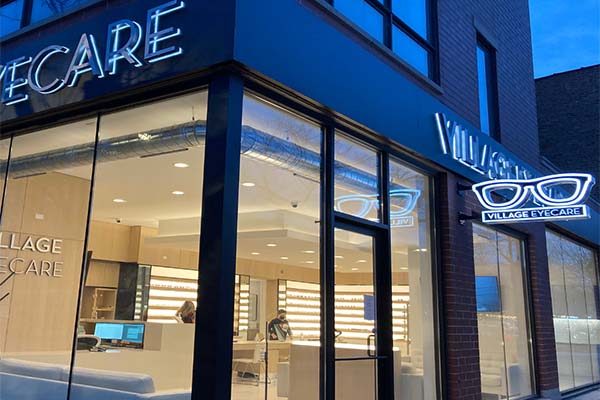Cardiologist Andalusia: Holistic Approach to Heart and Eye Health And Wellness
Wiki Article
Comprehending the Different Vision Correction Procedures Available for Clearer View
In the realm of vision correction treatments, a wide variety of choices exist to address refractive mistakes and offer people with more clear sight. From the extensively acknowledged LASIK surgery to much less intrusive procedures like PRK and implantable lenses, the area of ophthalmology offers an array of methods tailored to match different demands and preferences. Each treatment includes its very own set of considerations, benefits, and possible risks. Recognizing the nuances of these vision modification approaches is critical for making notified decisions regarding one's aesthetic health. Allow's check out the details of these procedures and clarified the path to attaining improved vision clarity.LASIK Surgical Treatment
LASIK surgery is a common refractive procedure used to correct vision problems such as farsightedness, astigmatism, and nearsightedness. This surgical technique, which stands for Laser-Assisted in Situ Keratomileusis, aims to improve the cornea to enhance exactly how light is focused on the retina, ultimately boosting vision clarity.One of the main advantages of LASIK surgical treatment is the quick enhancement in vision experienced by patients. Generally, LASIK surgery is a preferred choice for people looking for a long-lasting remedy for their vision issues.
PRK Treatment

PRK is an appropriate alternative for people with slim corneas or those at a higher risk of eye injuries, as it does not entail creating a corneal flap. The healing procedure for PRK is somewhat longer contrasted to LASIK, as the epithelium requires time to regrow. Patients may experience discomfort and blurry vision for a few days following the procedure.
Despite the longer healing time, PRK can produce exceptional outcomes in vision enhancement, making it a beneficial option for those that might not appropriate prospects for LASIK surgical procedure. - Eye Center Andalusia
Implantable Lenses
In comparison to PRK where the cornea is improved directly, implantable lenses use one more method for fixing vision by inserting artificial lenses inside the eye. This procedure is particularly useful for individuals with high degrees of farsightedness, astigmatism, or nearsightedness who may not appropriate prospects for laser surgical treatments like LASIK or PRK.Implantable lenses, likewise called phakic intraocular lenses, job by supplementing the eye's natural lens with a synthetic one. These lenses can be placed before the natural lens (anterior chamber) or behind the iris and before the natural lens (posterior chamber) By readjusting the power and positioning of these lenses, eye doctors can efficiently correct refractive mistakes and improve visual acuity.
One advantage of implantable lenses is that they are detachable and exchangeable, providing adaptability for future modifications. Nevertheless, just like any medical procedure, there are dangers involved, such as infection or cataract development. Clients thinking about implantable lenses ought to seek advice from an eye care professional to identify one of the most suitable alternative based on their private demands and eye health and wellness.
Corneal Rings

The treatment for placing corneal rings is minimally invasive and fairly quick, often performed as an outpatient treatment. During the surgical procedure, the eye doctor makes a little incision in the cornea and inserts the rings at a certain deepness. When in place, the rings assist to continue reading this improve the cornea, offering a smoother surface area for light to get in the eye, which can cause more clear vision.
Corneal rings find out here are taken into consideration a relatively easy to fix treatment, as they can be gotten rid of or replaced if needed. While they may not completely get rid of the demand for glasses or call lenses, corneal rings can substantially enhance vision high quality and overall visual convenience for individuals with keratoconus or various other corneal abnormalities.
Refractive Lens Exchange
Complying with the adjustment of corneal abnormalities with treatments like corneal rings, one more vision adjustment technique that can address refractive mistakes is Refractive Lens Exchange (RLE) RLE is a surgery that involves changing the eye's all-natural lens with a man-made intraocular lens (IOL) to fix refractive errors such as nearsightedness, presbyopia, and farsightedness. This treatment is specifically valuable for people who might not be appropriate prospects for procedures like LASIK or PRK as a result of variables such as thin corneas or high refractive errors.RLE belongs to cataract surgical treatment, as both involve getting rid of the eye's all-natural lens; however, in RLE, the lens is clear, not over cast as in cataracts. The artificial lens dental implanted throughout RLE can be customized to resolve the individual's details refractive error, giving clear vision at different ranges. Healing time for RLE is reasonably quick, and individuals can anticipate improved vision not long after the treatment. As with any type navigate here of operation, prospective threats and issues exist, so an extensive appointment with an eye care expert is vital to determine if RLE is the best vision adjustment alternative.
Verdict

In the realm of vision adjustment procedures, a plethora of choices exist to address refractive mistakes and offer people with clearer view.LASIK surgical treatment is a common refractive treatment used to deal with vision issues such as farsightedness, nearsightedness, and astigmatism.While also a typical refractive procedure, the PRK (Photorefractive Keratectomy) method varies from LASIK surgical treatment in its approach to remedying vision issues.Adhering to the adjustment of corneal abnormalities with procedures like corneal rings, one more vision improvement method that can address refractive errors is Refractive Lens Exchange (RLE) LASIK surgical procedure, PRK procedure, implantable lenses, corneal rings, and refractive lens exchange are all choices that can attend to different vision issues.
Report this wiki page